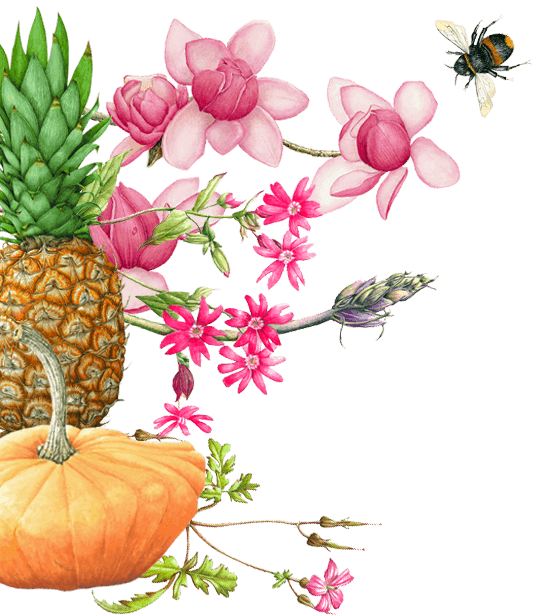Top Tips For Dahlia Success from Productive Garden Supervisor, Katie Kingett
- 6th Aug 2020
For successful dahlias it’s about doing the right thing in the right place at the right time!
Dahlias are versatile plants which provide a riot of colour in one large dedicated bed but can equally incorporated into the herbaceous border or displayed in beautiful containers. Cultivars for containers include ‘Bishop of York’, with dark foliage and yellow flowers. This can be teemed with another taller dahlia, in a contrasting colour. Totally tangerine is another recommended by Sarah Raven and although tall has dramatic flowers well worth growing for a show stopping display. Roxy provides single flowers in a vivid shade of pink and grows to a height of 70cm and is also well suited to container growing. Single flowered dahlias, such as Roxy and Bishop of York provide a rich nectar source for pollinators from July through to October. For those feeling adventurous you can grow edible dahlias in pots - DeliDahlias can be sourced from Lubera nursery.
Dahlias are versatile plants to use in the herbaceous border – available in a range of sizes and colours, providing late summer colour into Autumn too. Cultivars suitable for the herbaceous border include Dahlia ‘Doris Day’, with small red flowers perfect for cutting.
Top picks for heritage cultivars include ‘Admiral Rawlings’, a vigorous decorative dahlia in a rich velvety purple dating back to 1904. In contrast named ‘White Aster’ from 1879 provides small flower heads popular for cutting and can be included in the border or as a striking individual display.
Plant your seedlings or tubers at the end of May or early June into well drained soil in a sunny position. Ideally soil will have been enriched with well-rotted manure earlier in the year. Tubers can be planted 4-6 inches deep in their flowering position or seedlings at soil level.
Whilst growing, avoid treading on the ground around your dahlias. Hoe for weeds and keep an eye out for slugs and aphids.
Support your dahlias individually with canes or with posts and netting for a larger display.
Dis-bud by taking out the two smaller buds below the central flower, this will produce a larger more impressive bloom for cutting.
Once flowering, cut regularly and dead head to prolong flowering from July to October.
Regular cutting, deadheading and disbudding are useful opportunities to check for pests. Aphids, capsid bug & earwigs can cause damage, but there are simple ways to monitor numbers. Small numbers of aphids can be washed off with a hose or an infested stem can be cut out to minimise numbers.
Earwigs can cause damage to flower petals but can be trapped by putting an upturned flower pot, stuffed with straw on canes, which is shaken every morning. Encouraging wildlife will also help keep pests at bay – birds do a brilliant job within the Walled Gardens often shadowing gardeners as they work.
Capsid bugs are more prevalent during June through to September – look out for numerous small holes on leaves, a natural organic insecticide may that contains pyrethrum may be an option here.
When the first frosts blacken the leaves, you can either lift your tubers and store in a cool dark room or cut down to ground level and cover with a protective mulch (compost/woodchip) at a depth of 3-6 inches.
If lifting tubers, cut stems down to the ground. Allow tubers to dry naturally, before removing excess soil & storing in a crate or wooden box. Cover tubers with sawdust or a similar dry medium/compost but leave the crown exposed.
Tubers can be placed in a light indoor frost-free position to encourage growth in early Spring. If required tubers can be split when shoots are an inch tall and potted on into individual pots.
- Enjoy your dahlias!



